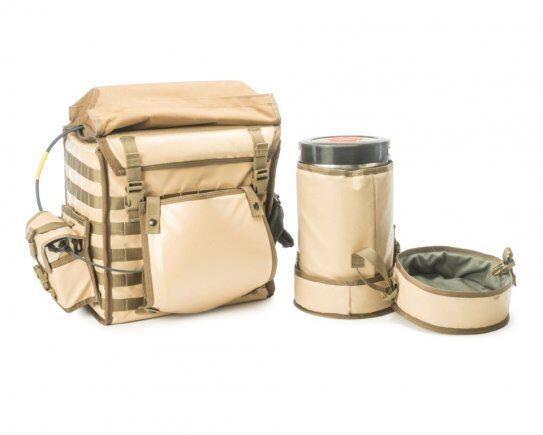Now that the 4th Infantry Division's 3rd Armored Brigade Combat Team has settled into its rotation in eastern Europe, it's time to blend into the surroundings.
Soldiers are working to paint all 400 of their M1A2 Abrams tanks, Bradley Fighting Vehicles and M109A6 Paladin artillery vehicles, which are still sporting tan from their time in the Global War on Terror, a shade of woodland green to match their new terrain, according to information released Monday by the Army.
"A lot of the reasons why they weren't done before was because of our high operational tempo leading up to our deployment to Europe," said Capt. James England, commander of B Company, 1st Battalion, 66th Armor Regiment. "We basically had intense training event to intense training event, which led to little room for opportunities."
The brigade got word of its upcoming Europe deployment, the first in a planned series of back-to-back armor brigade rotations to Europe, a year ago, brigade commander Col. Christopher Norrie told Army Times in March.
To prepare for their January arrival, the unit spent much of the year training at home, followed by almost two months at the National Training Center at Fort Irwin, California, according to the Army.
Once they arrived, they had to spread thousands of soldiers and thousands of pieces of equipment from a German port into several locations in eastern Europe, where they got current on their training and maintenance, then spread out to an area that ranges from Estonia to Bulgaria.
Early April, according to the Army, was the first time the soldiers had a moment to stop and consider the paint.

Soldiers from B Company, 1st Battalion, 66th Armor Regiment, 3rd Armored Brigade Combat Team, 4th Infantry Division, mix green paint on April 4, 2017, prior to applying it to the company's M1A2 Abrams tanks at Grafenwoehr Training Area, Germany.
Photo Credit: Chaplain (Capt.) Malcolm Rios/Army
"We've always camouflaged the tanks," said England. "We use our camouflage nets, and that does a pretty good job concealing the tanks. We've always done things to mitigate the tan color on the tanks. Now it just goes a step further with the paint on the tanks."
The process takes three days, the Army said, including power washing, 12 hours to dry, 12 hours to paint a tank, and another 12 hours to dry.
The brigade is scheduled to remain in Europe until September, at which point they'll bring their equipment home and strip the green.
"The paint is a temporary paint," England said. "Once we go back home, we can pressure wash it off."
Meghann Myers is the Pentagon bureau chief at Military Times. She covers operations, policy, personnel, leadership and other issues affecting service members.




